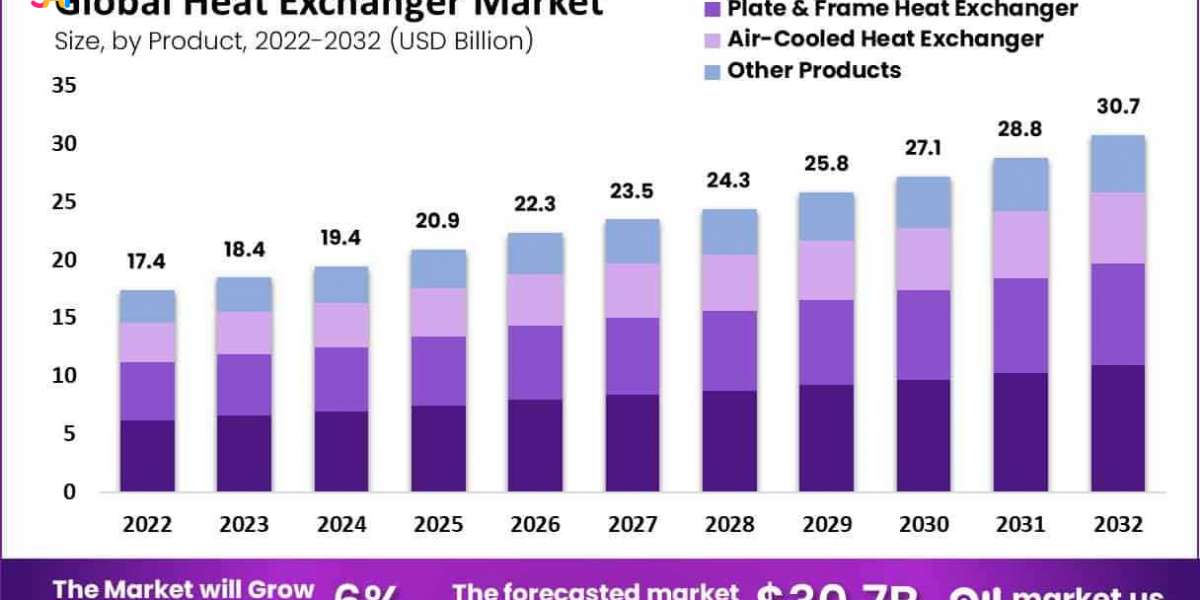Report Overview:
The global heat exchanger market was valued at approximately USD 17.4 billion in 2022 and is forecast to grow at a 6% CAGR from 2023 to 2032, reaching around USD 30.7 billion by 2032. Demand is being driven by key sectors such as oil gas, power generation, chemical processing, HVAC, and food beverage highlighting the growing global emphasis on efficient thermal management
Key Takeaways
- Shell tube exchangers dominated in 2022, contributing 35.7% of market revenue.
- Chemical petrochemical industries led end-user demand with ~22.7% share.
- Rising energy prices and the expansion of renewables are major growth drivers.
- Obstacles include high initial costs and complex manufacturing processes.
- Opportunities lie in the rapidly growing demand from developing nations and the increasing shift toward energy-efficient exchangers.
- Regional strength: Europe held about 31.9% of the global market in 2022.

Sample Report Request For More Trending Reports:
https://market.us/report/heat-exchanger-market/free-sample/
Key Market Segments
Based on Product
- Shell Tube Heat Exchanger
- Plate Frame Heat Exchanger
- Brazed Plate Frame Heat Exchanger
- Gasketed Plate Frame Heat Exchanger
- Welded Plate and frame Heat Exchanger
- Others
- Air-Cooled Heat Exchanger
- Other Products
Based on the Material of Construction
- Stainless Steel
- Copper
- Aluminum
- Other Materials
Based on End-User
- Chemical Petrochemical
- Oil Gas
- HVAC Refrigeration
- Power Generation
- Food Beverage
- Pulp Paper
- Other End-Users
Growth Opportunity
- Compact energy-saving designs: Manufacturers are focusing on smaller, more efficient units that reduce energy use and carbon emissions .
- Advanced construction materials: Adoption of stainless steel, alloys, and composites (like ceramic) is rising to enhance performance and durability .
- Emerging markets: Rapid infrastructure and industrial growth in APAC, especially China and India, offer high potential .
Latest Trends
- Efficiency first: Industry shift toward heat exchangers that are more compact, more efficient, and lower in CO₂ emissions.
- Material innovation: Development of superalloys and composites, as well as advanced brazing and gasket technology to enhance life span and performance .
- Renewable sector uptake: Growing use within renewable energy projects, including thermals, nuclear plants, and heat pump systems .
Market Key Players
- Alfa Laval AB
- Kelvion Holding GmbH
- Danfoss A/S
- API Heat Transfer Inc.
- Xylem Inc.
- HRS Heat Exchangers Ltd.
- Hisaka Works, Ltd.
- Koch Heat Transfer Company
- GEA Group AG
- SWEP International AB
- Thermax Limited
- Tranter, Inc.
- Other Key Players




